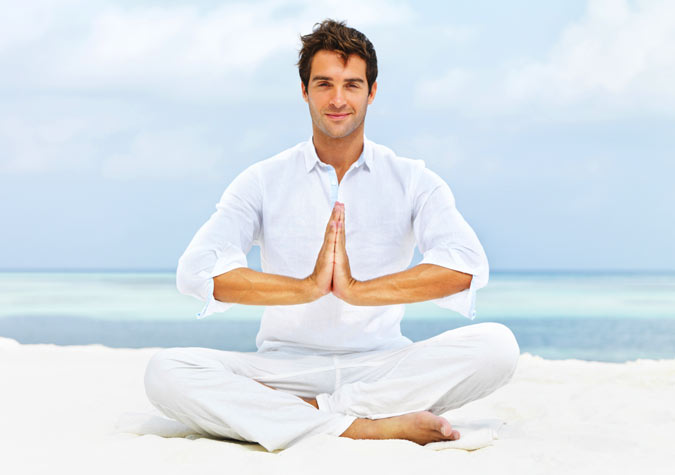(Originally published in aspIRe Magazine Issue 16)
Why should meditation be part of our lives?
Each of us is a sponge of sensory enjoyment. Our common thoughts are centred on the animal propensities of eating, sleeping, mating and defense. But, what makes us fundamentally different from animals is a fifth faculty: intelligence.
We have the ability to ask questions about the truth of our existence. We ask questions like “Who am I?”, “What is my purpose in life?”, “Why am I suffering?” and “How can I get out of this suffering?”. This intelligence is what enables us to meditate – to contemplate on the needs of the soul. The soul is perfect by nature but we all live in a temporary body that is basically flawed and so we tend to look for perfection. And, we can achieve perfection through the practice of meditation.
Meditation is synonymous with prayer. It connects the soul to the spiritual world, the realm of the Supreme Person. Through this disciplined practice, we get to the point where we constantly think of the Supreme Person. We find ourselves perpetually immersed in that frame of consciousness.
Mantra comes from the Sanskrit word Mana (mind) and the suffix -tra (instrument of thought). Mantras are spiritual sound vibrations. The basic meditation mantra Omkara (ॐ) is the sound representation of the Supreme Person. It is transcendental. It liberates mankind and all living entities from material sound vibrations. It purifies the soul of sinful, karmic activities that bind the soul in the repeated cycle of birth, disease, old age and death.
Meditation is also a process to develop real love – love for the Supreme Person that translates into love for humanity and all living beings. Love is the very essence of the soul, just like the wetness of water and the heat of fire. Love is inseparable from the soul. When love comes in contact with the modes of nature – ignorance, passion and goodness, it turns into lust. It becomes contaminated with worldly desires. It becomes the perversion of love. Material gratification does not satisfy love. When the soul is hungry and thirsty, we feed it by going inside ourselves and meditating.
The side benefit of meditation is to experience peace and tranquillity and to achieve the states of Atmarama (self-satisfaction) and Dhira (being sober). Being sober means not easily intoxicated or agitated. When we are spiritually sober, we are able to control the demands of our mind and the urges of our tongue, belly and genitals. It’s only when we’re sober that we become truly happy.
Meditation cleanses our hearts and makes us see the absolute truth more clearly. The ultimate goal of meditation is self-realisation. It means understanding that ‘I am a spirit soul in essence and I’m an eternal servant of the Supreme Person. I am not God. My eternal dharma (duty) is loving, devotional service to the Supreme Person.”
—–
Many of you have seen me carry around my Japa beads. Over the years, I have received numerous curious questions that I have only been very happy to answer. To those of you who have been asking me questions on the process of meditation, I have created a page on SoundCloud where I have uploaded some recordings of myself chanting mantras and bhajans. In the near future, I plan to also upload new tracks of my family and friends chanting. Thank you for letting me share with you what I’ve learnt from my Guru during my early life in the Ashram. I hope you all enjoy and take these Holy Names with you and chant always… Haribol!
https://soundcloud.com/japa16108
READ ALSO: Taking Care of the Material Body and the Person Inside


